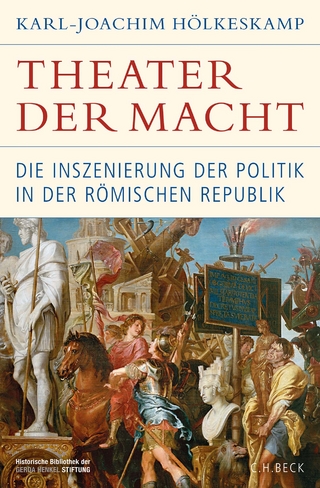
Rulers and Rulership in the Arc of Medieval Europe, 1000-1200
Seiten
2023
Routledge (Verlag)
978-1-032-48289-7 (ISBN)
Routledge (Verlag)
978-1-032-48289-7 (ISBN)
Rulers and Rulership in the Arc of Medieval Europe challenges the dominant paradigm of what rulership is and who rulers are by decentering the narrative and providing a broad swath of examples from throughout medieval Europe. Within that territory, the prevalent idea of monarchy and kingship is overturned in favor of a broad definition of rulership.
This book will demonstrate to the reader that the way in which medieval Europe has been constructed in both the popular and scholarly imaginations is incorrect. Instead of a king we have multiple rulers, male and female, ruling concurrently. Instead of an independent church or a church striving for supremacy under the Gregorian Reform, we have a pope and ecclesiastical leaders making deals with secular rulers and an in-depth interconnection between the two. Finally, instead of a strong centralizing polity growing into statehood we see weak rulers working hand in glove with weak subordinates to make the polity as a whole function.
Medievalists, Byzantinists, and Slavists typically operate in isolation from one another. They do not read each other’s books, or engage with each other’s work. This book requires engagement from all of them to point out that the medieval Europe that they work in is one and the same and demands collaboration to best understand it.
This book will demonstrate to the reader that the way in which medieval Europe has been constructed in both the popular and scholarly imaginations is incorrect. Instead of a king we have multiple rulers, male and female, ruling concurrently. Instead of an independent church or a church striving for supremacy under the Gregorian Reform, we have a pope and ecclesiastical leaders making deals with secular rulers and an in-depth interconnection between the two. Finally, instead of a strong centralizing polity growing into statehood we see weak rulers working hand in glove with weak subordinates to make the polity as a whole function.
Medievalists, Byzantinists, and Slavists typically operate in isolation from one another. They do not read each other’s books, or engage with each other’s work. This book requires engagement from all of them to point out that the medieval Europe that they work in is one and the same and demands collaboration to best understand it.
Christian Raffensperger is the Kenneth E. Wray Chair in the Humanities at Wittenberg University. The focus of his scholarly work has been on connecting eastern Europe with the rest of medieval Europe. This began with his first book, Reimagining Europe: Kievan Rus’ in the Medieval World (Harvard UP, 2012) and has continued through numerous other books and articles.
Introduction / Chapter. 1 – Problems with Titulature / Chapter 2 – Corulership / Chapter 3 – Understanding Succession / Chapter 4 – Rulers and the Church / Chapter 5 – Monastic Legitimation of Rulership / Chapter 6 – Weak Power Polities, Claims Making, and Itinerant Rulership / Conclusion
| Erscheinungsdatum | 26.08.2023 |
|---|---|
| Zusatzinfo | 19 Halftones, black and white; 19 Illustrations, black and white |
| Verlagsort | London |
| Sprache | englisch |
| Maße | 156 x 234 mm |
| Gewicht | 480 g |
| Themenwelt | Geschichte ► Allgemeine Geschichte ► Altertum / Antike |
| Geschichte ► Allgemeine Geschichte ► Mittelalter | |
| Geisteswissenschaften ► Geschichte ► Regional- / Ländergeschichte | |
| Sozialwissenschaften ► Soziologie ► Spezielle Soziologien | |
| ISBN-10 | 1-032-48289-3 / 1032482893 |
| ISBN-13 | 978-1-032-48289-7 / 9781032482897 |
| Zustand | Neuware |
| Haben Sie eine Frage zum Produkt? |
Mehr entdecken
aus dem Bereich
aus dem Bereich
das Neue Rom und die Welt des Mittelalters
Buch | Softcover (2023)
C.H.Beck (Verlag)
CHF 30,80
die Inszenierung der Politik in der römischen Republik
Buch | Hardcover (2023)
C.H.Beck (Verlag)
CHF 67,20


